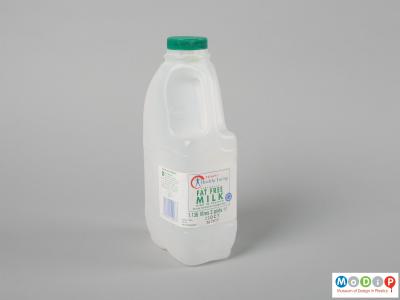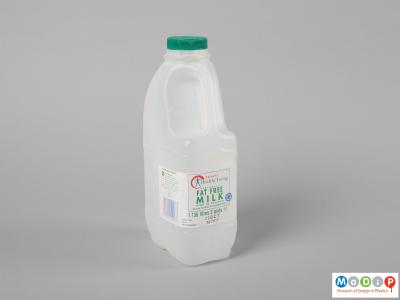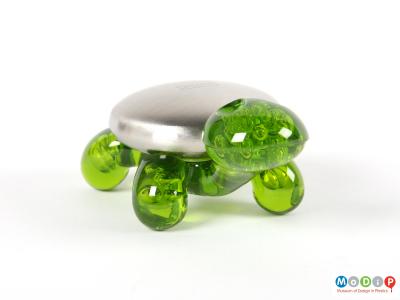Student creative
The animation team was one of three Student Creatives in the academic year 2018 / 2019. The aim of the initiative was to offer all students at the AUB an opportunity to create work inspired by the MoDiP collection. This could be in any discipline with any creative outcome from physical art work to film or acting production. The MoDiP collection and / or the museum's practices had to be at the heart of the project and the work needed to be displayed either physically or digitally after a period of 20 weeks. A small bursary was provided to assist with material costs during the project and the remainder was paid on completion.
The resident was expected to keep the MoDiP team updated with progress reports on a regular basis either through email or face-to-face. They were also expected to write three blog posts during the process which follow below. The project not only helped MoDiP work closely with an AUB student, it gave the student a live brief and an opportunity to demonstrate their professional practice beyond their academic requirements.
Animation Team's first blog post
As animation students, our project revolves around bringing animation into a more physical dimension by using plastics. We plan to do this by producing a 3D printed zoetrope using characters modelled and animated within the computer.
What is a Zoetrope?
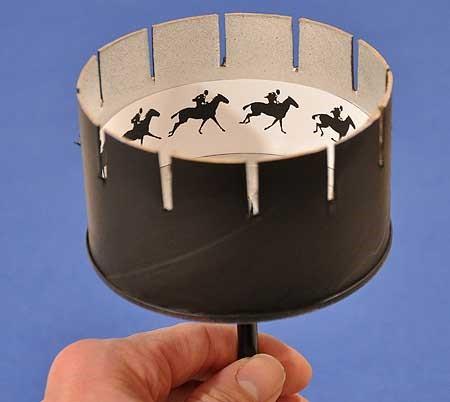
‘A zoetrope is one of several pre-film animation devices that produce the illusion of motion by displaying a sequence of drawings or photographs showing progressive phases of that motion.’
(https://en.wikipedia.org/wiki/Zoetrope)
Traditionally, zoetropes are 2D animations akin to flip books, in that you view the animation through small slits in a spinning device. However, thanks to modern plastic technology our project will consist of several 3D printed models, spinning on a base with a flickering light to create the illusion of movement. We plan to illustrate chaos within the piece, by combing multiple characters undertaking their frenetic actions at the same time.


Who is working on this project?
We are a team of around ten 2nd year Animation Production students from the CG pathway of our course. This project was initially pitched to us by our lecturer Ian House, as an extra project to assist with the learning of CG, and as a way of showcasing animation to those outside of the course.
We assigned roles in order to treat the project like any other animation production. The main roles are as follows:
- Director: Merlin Voss
- Producer: Jonny Strutt
- Co-Producer: Marie Ogunkolade
- Co-Director: Calum Avery
- Supervising Lecturer: Ian House
Initial Designs of the Characters
We began by developing the characters that we would be modelling. We had to keep in mind the simplification of the design for ease of modelling, as well as for animating and printing. The characters were based on previous projects, and these will be developed further throughout this project - predominantly being brought together and informed by the MoDiP collection, whether it be references, design ideas, or miniature poly versions of objects brought to life within the scene.
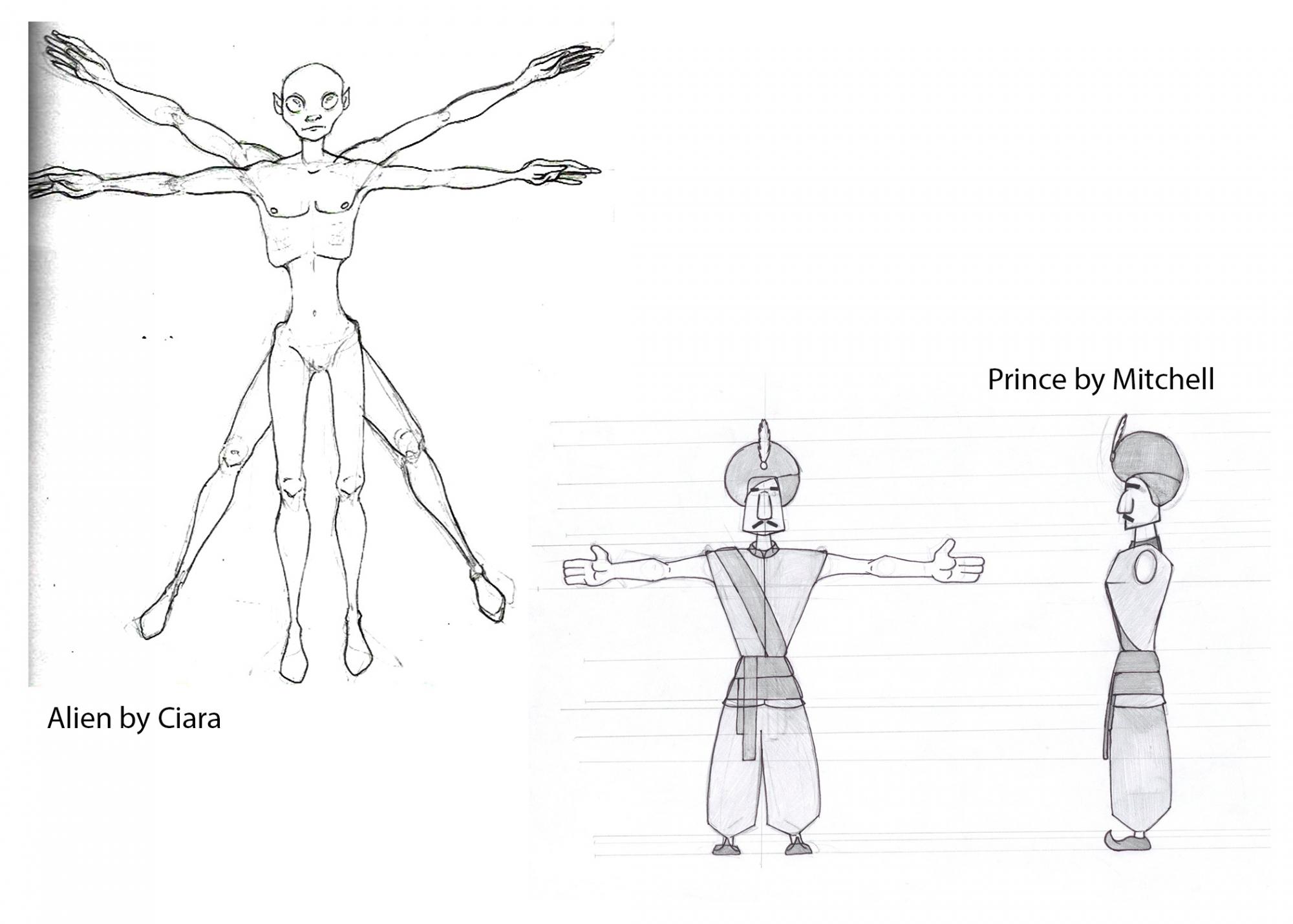
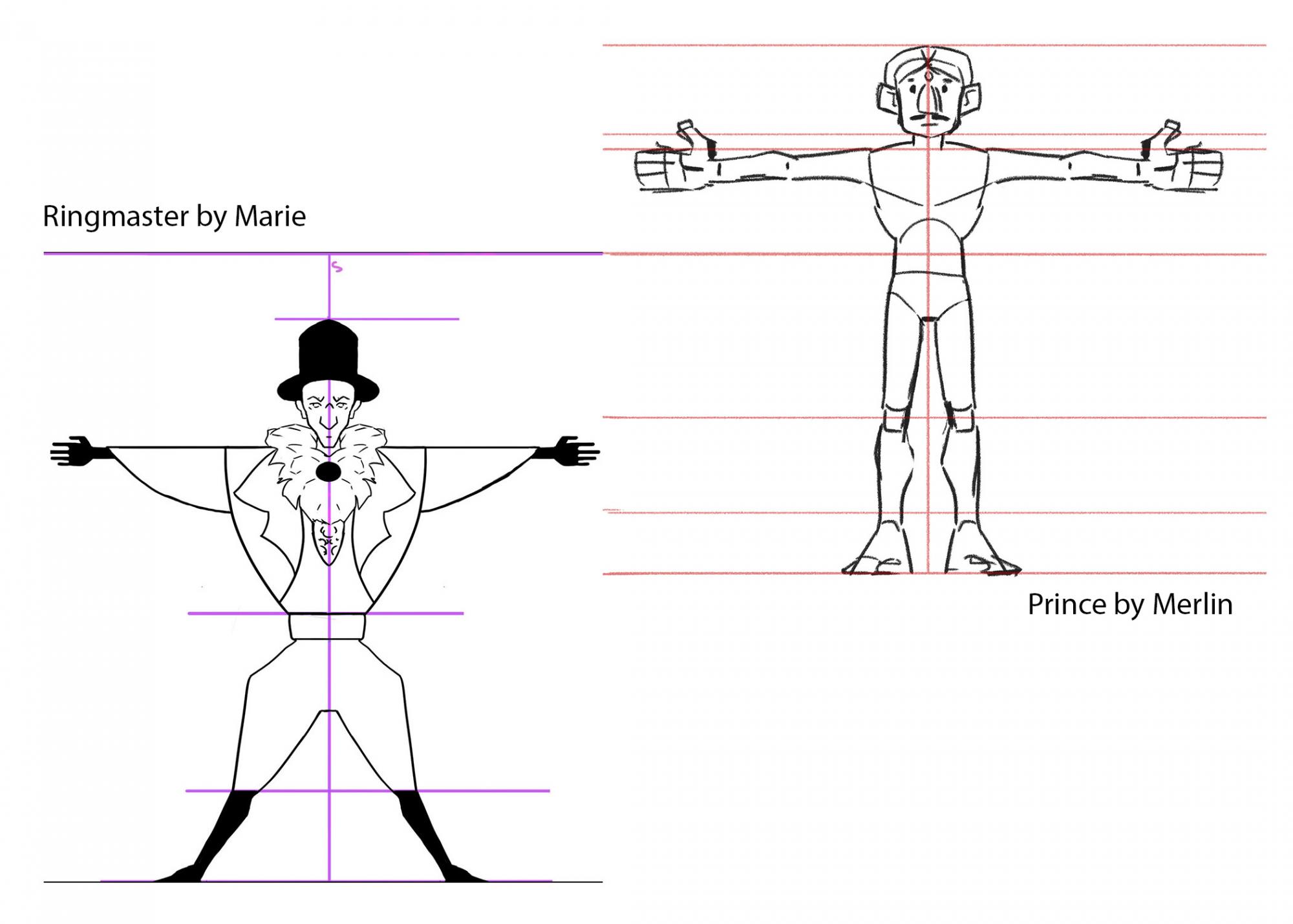
Planning the Animation

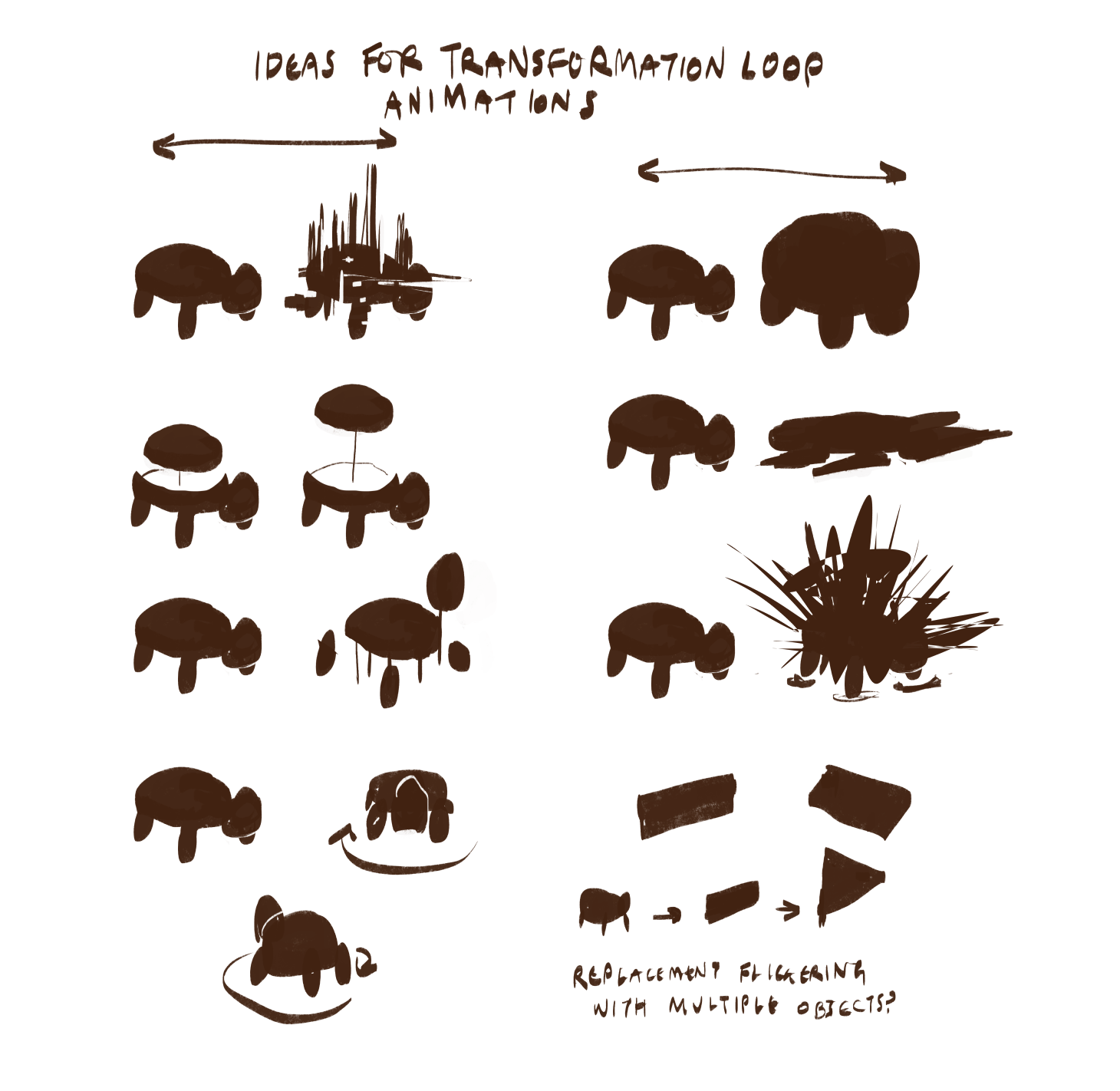
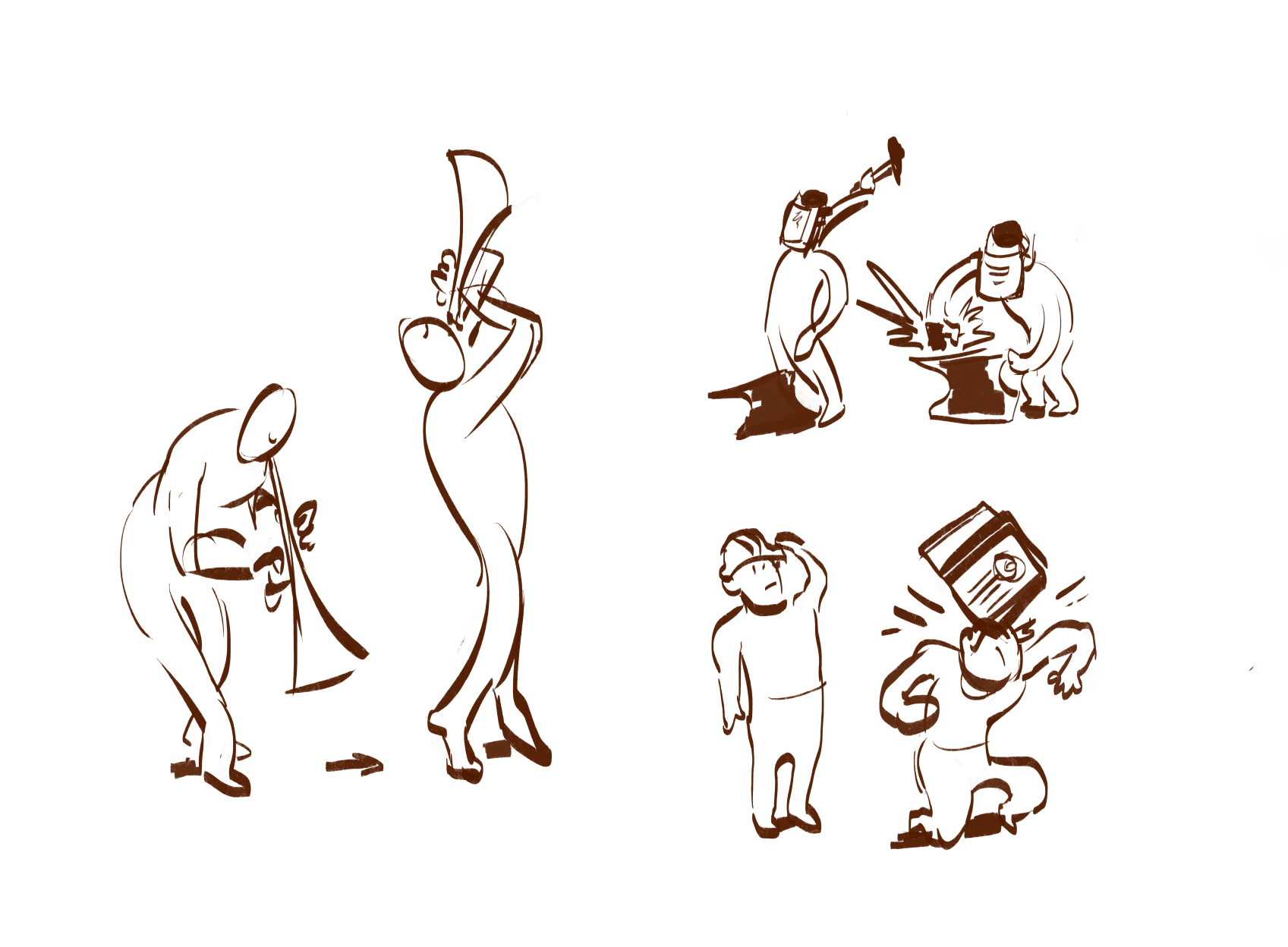
Here I have shown thumbnails of the early stages of developing the animations. As well as the moving characters, we could perhaps include morphing object animations, to add to the overall chaos of the scene.
Looking Forward
Our first job going forward, is to get the roster of characters modelled and rigged using Maya software. Beyond that we will be making basic 2D animated tests, and then transferring those animations to 3D.
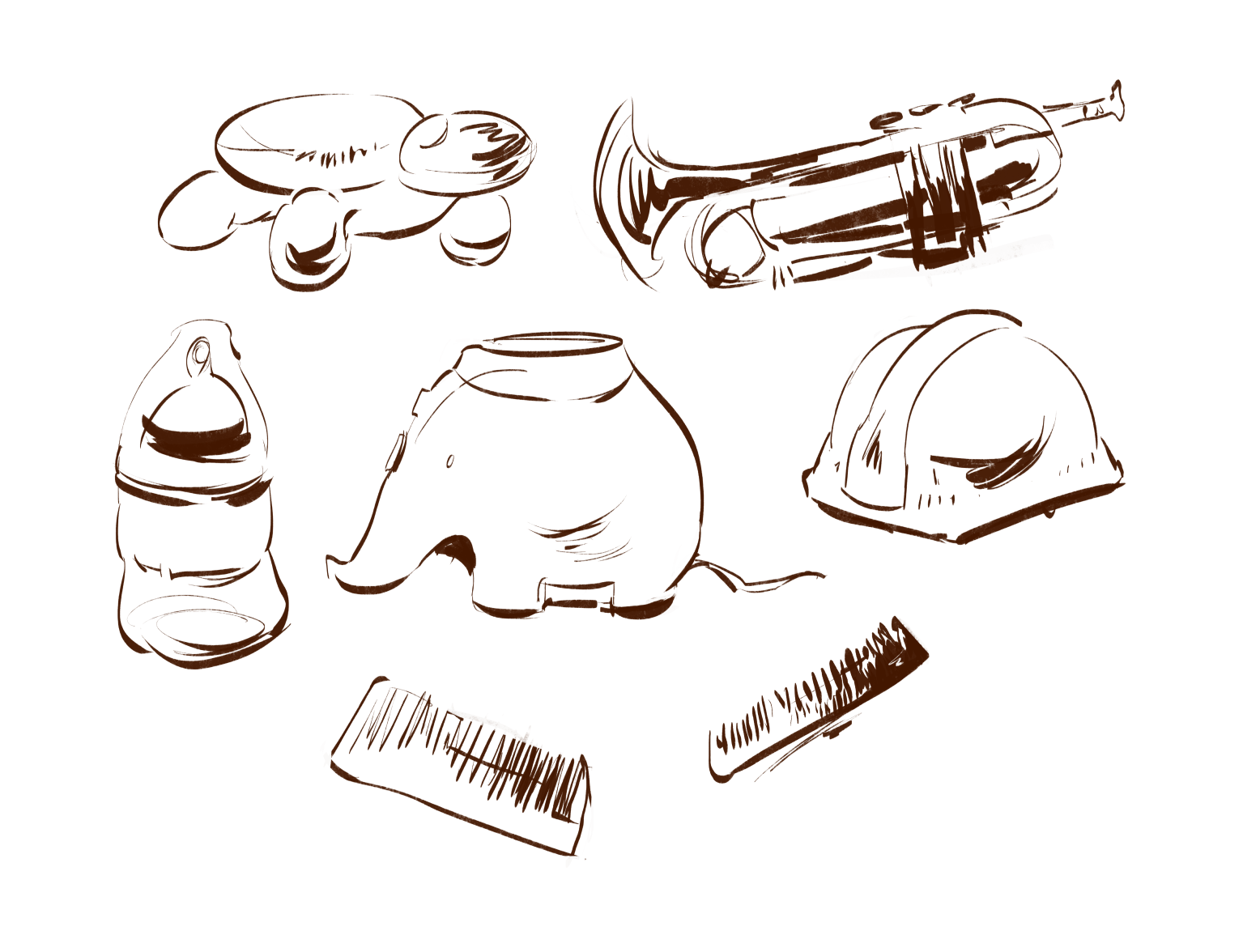
Written by Merlin Voss
Animation Team's second blog post
Our Project aim: 3D print and construct a Zoetrope.
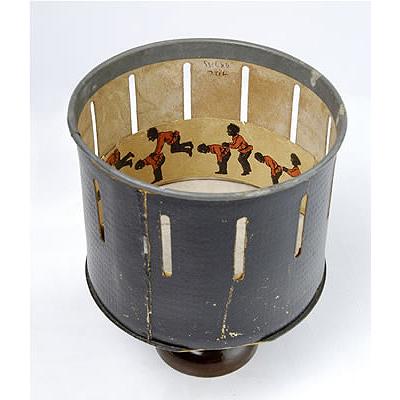
MoDiP – font of all plastic inspiration.
The collection at MoDiP has allowed us to see familiar objects in new ways. I particularly recall the feeling of seeing a milk carton in an entirely knew light, when I saw it in the ‘See Through’ exhibition at MoDiP.
We want to do the same for animation. Taking a familiar art form that most people see everyday in one form or another, and making you take another look – making you think again.
Utilising the phenomenal ability of plastics, to help us keep order to the chaos of the world around us, is exemplified in the Tupperware display MoDiP is currently showing. (https://www.modip.ac.uk/artefact/aibdc-005464). Tupperware can keep all manner of things separate and keep important substances apart.
Our response to this is to create a 3D plastic printed animation displaying the chaos of disorder, which only becomes clear motion once a flashing light and rotating table are added. For us animation is the chaos in which only 3D printed plastic and a rotating table can find order.
The Team – An evolution
Our initial team of ten has slimmed down as members of our 2nd year animation CG pathway have made decisions to leave CG work behind. However, 3rd years interested in the project have stepped in to join us to produce this project. As we currently stand the team is:
Producer: Jonny Strutt
Supervising Director: Merlin Voss
Animator: Sam Elphick
Assistant Modellers/Riggers/Animators: Calum Avery, Mitchell Shilling, Ciara Davis
Supervising Lecturer: Ian House
Where the project is now:
The zoetrope has moved along the pipeline of production well. The conventional parts of the 3D animation process (line tests, modelling, rigging, and key-posing) have been relatively smooth.
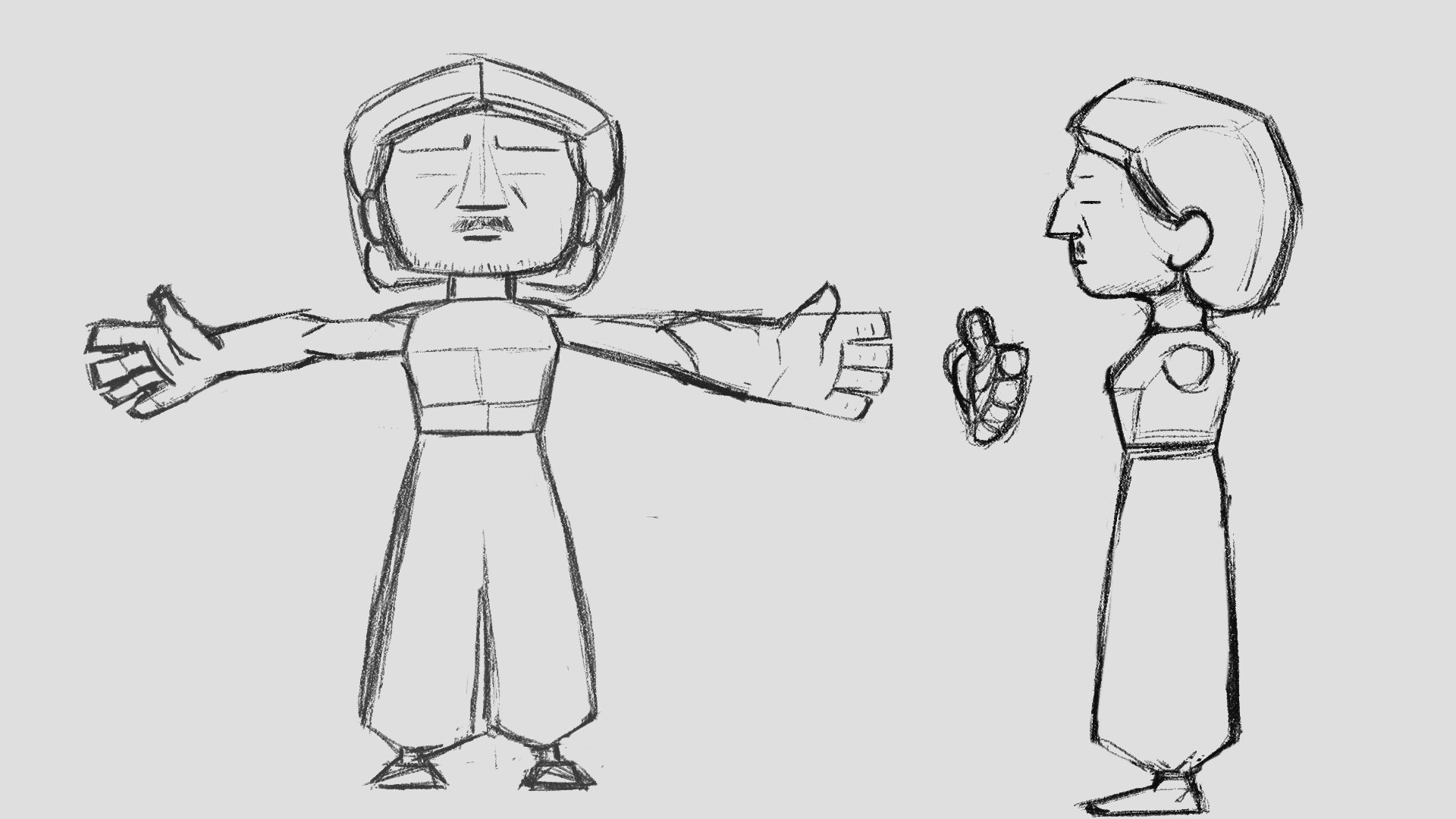
However, one key element of the rigging process called ‘Weight Painting’ has been a cause of some grief. Without it, the skeleton constructed during rigging would move independently of the model, leading to no animation. Not much help. When it is done badly, or as in this case, it is the first time using the tool, the model can not only animate badly, but break apart entirely. The loyal cart horse that is the phenomenally complex computer code behind 3D animation can easily buck and takes quite some calming down if it does.

However, once a few pose tests were done, and the tool was grasped, the rigging was complete and the animation could progress smoothly to its eventual conclusion: a shot of a character viewed from one side only, as dictated by the filmmakers.
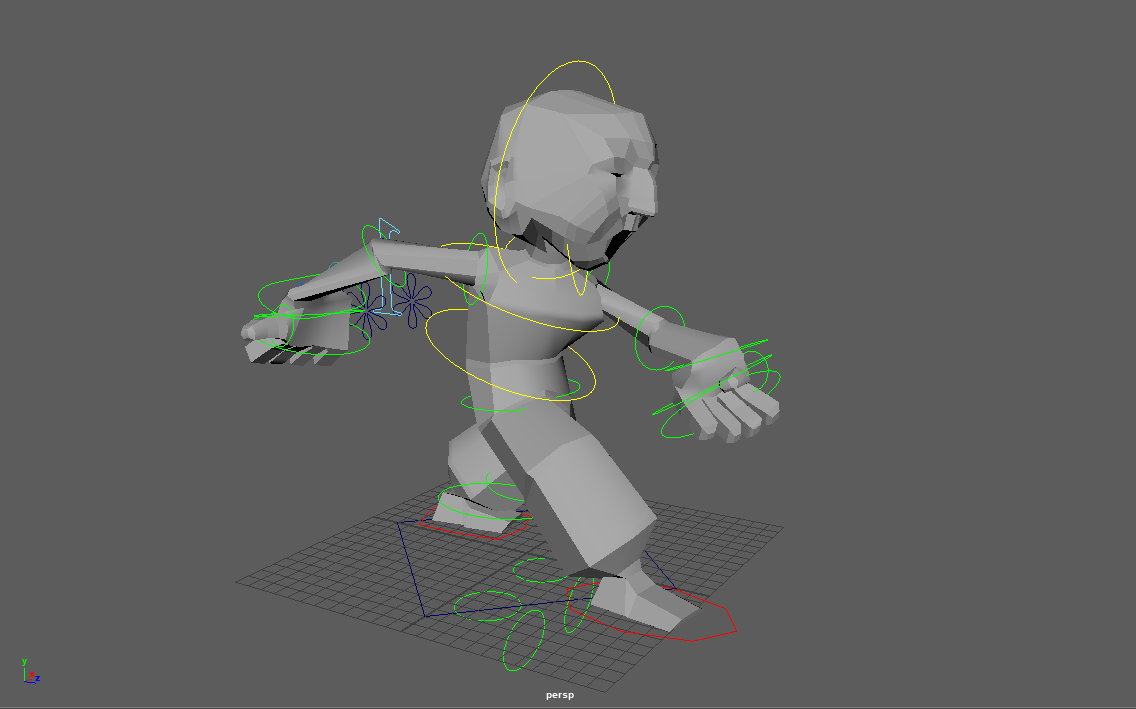
Bringing the animation into a 3-dimensional space will allow an audience to see and enjoy the subtleties of the animation from any angle they can crane their neck to see. This prospect excited me greatly, as when animating in CG I have often found ‘animating to the camera’ has caused the work to look good from one angle alone, so when moving around the animation in virtual 3D space, it suddenly looks much less effective. (On more than one occasion legs have been stuck at bizarre angles simply by virtue of being off screen and therefore irrelevant to the film.)
Displaying animation in such a way as to be able to look at the whole body, from any side, has forced me to improve my animation. The overall movement must read from any angle, the arcs need to work in a 3D space, no longer just a 2D plane, and the action has to read clearly from as many angles as possible. It is no longer animating on a virtual set, it is animating on a virtual theatre stage with a mobile audience.

From here more characters will be added around the one I have done, by the other members of the team following the same process as myself.
The next stage – Virtual to Reality
A good chunk of the usual process is complete. Now the transition begins - breaking the veil of Maya, pulling the curtain back between the illusion of the virtual world and the tangibility of reality is all that’s left to do. Simple.
The plan is as follows:
- 3D print the ‘frames’ of animation as individual models using the wonder material that is plastic.
- Clean the models of any unforeseen elements of the printing process.
- Laser cut a disk for the models to slot into perfect alignment for the animation. [see fig. 8 below of the plan for cutting.
- Put the parts together on a turntable using nuts and bolts.
- Add the motor and flashing lights.
- Watch the models come to life in an exhibition space.
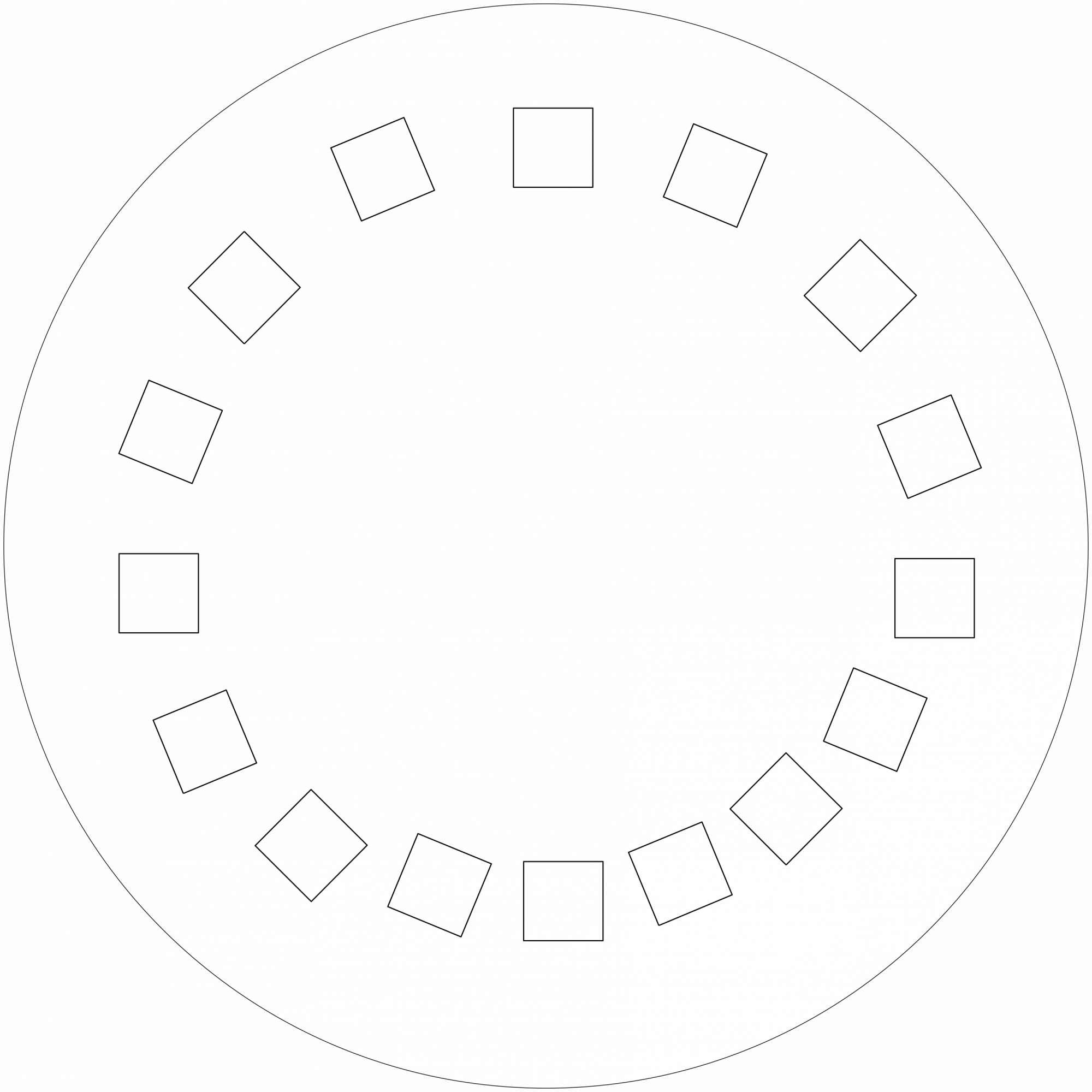
Each stage may pose new problems as this is the key challenge of the project – getting an animated performance sculpted in three dimensions. This challenge we will take one step at a time.
Taking on a challenge is what animating is all about, we wouldn’t do it if it was easy.
Written by Jonny Strutt
Animation Team's final blog post
The Zoetrope Nears Completion – 3D Plastic Printing Begins

Having created our virtual zoetrope of characters exhibiting their own personal modes of chaos, the key step of moving through the screen into the 3rd dimension begins. A project such as this has only been made possible through the technological innovations of 3D plastic printing. The on-site printer at AUB is a ‘Selective laser Sintering’ (SLS) printer, using White Polyamide Powder and lasers to produce the models.

The printed models are a robust white solid material. The plinths the models stand on have been designed to be able to be attached to a nut and bolt to hold them in place on the rotating zoetrope.

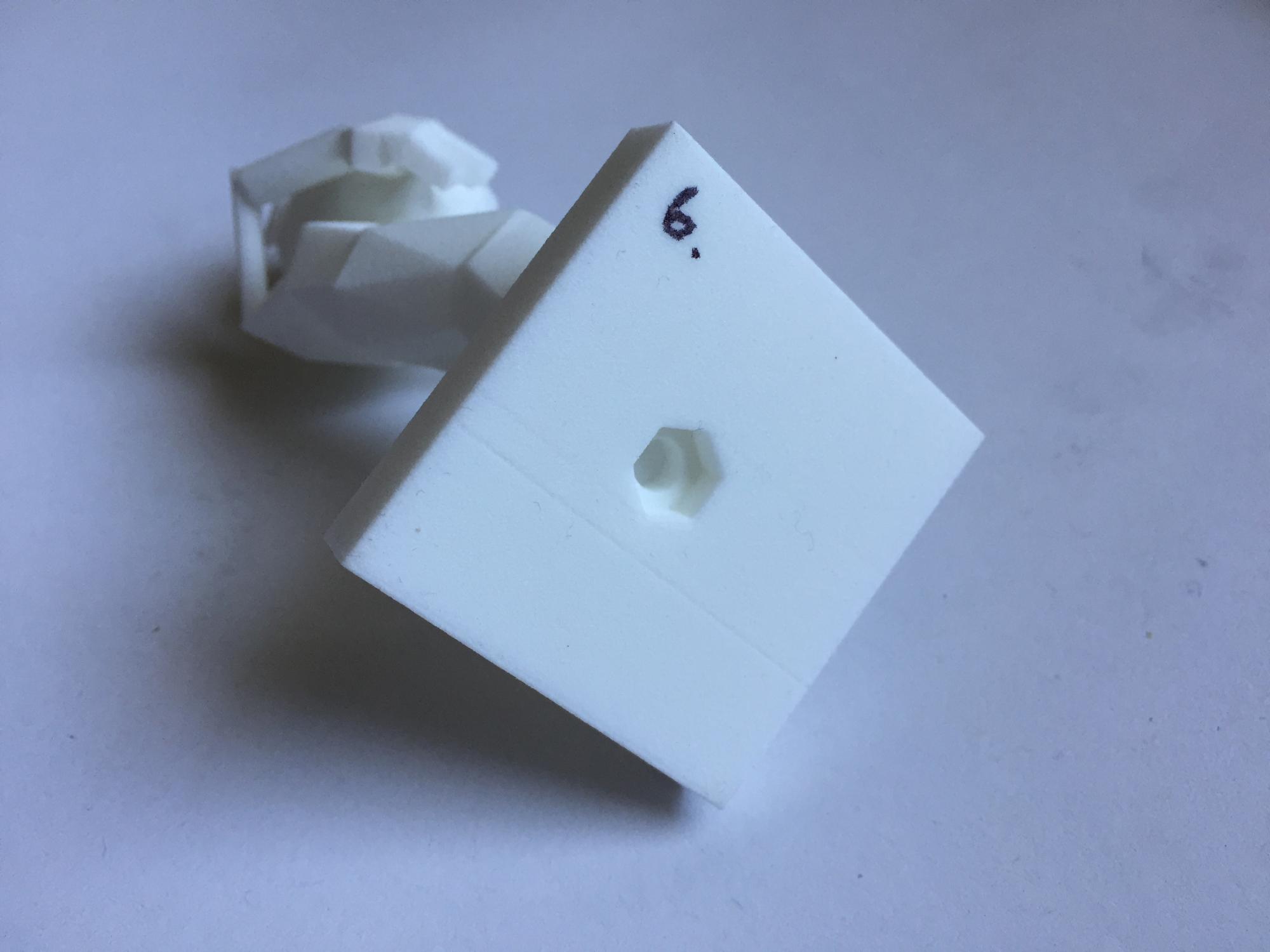
Construction requires a precision of planning and design of precisely where the frames must be placed to produce the illusion of smooth motion. We have used exported images from Autodesk Maya to take into Adobe Illustrator and from there laser-print plastic sheet guides for the plinths to make sure they are positioned in the correct place on the zoetrope.
Goals and Reality
As the project has progressed, the goals set out in our first blog post for this project had to be adapted to the feasibility of the project, in terms of person-hours available and cost of materials and processes.
We unfortunately had to drop the idea of a series of small animated models of objects from the MoDiP collection being destroyed and re-forming. However, objects from the MoDiP collection will be displayed in the exhibition for this project to clearly show the connection from one to the other. These are the objects which will be in the exhibition:
Outcome
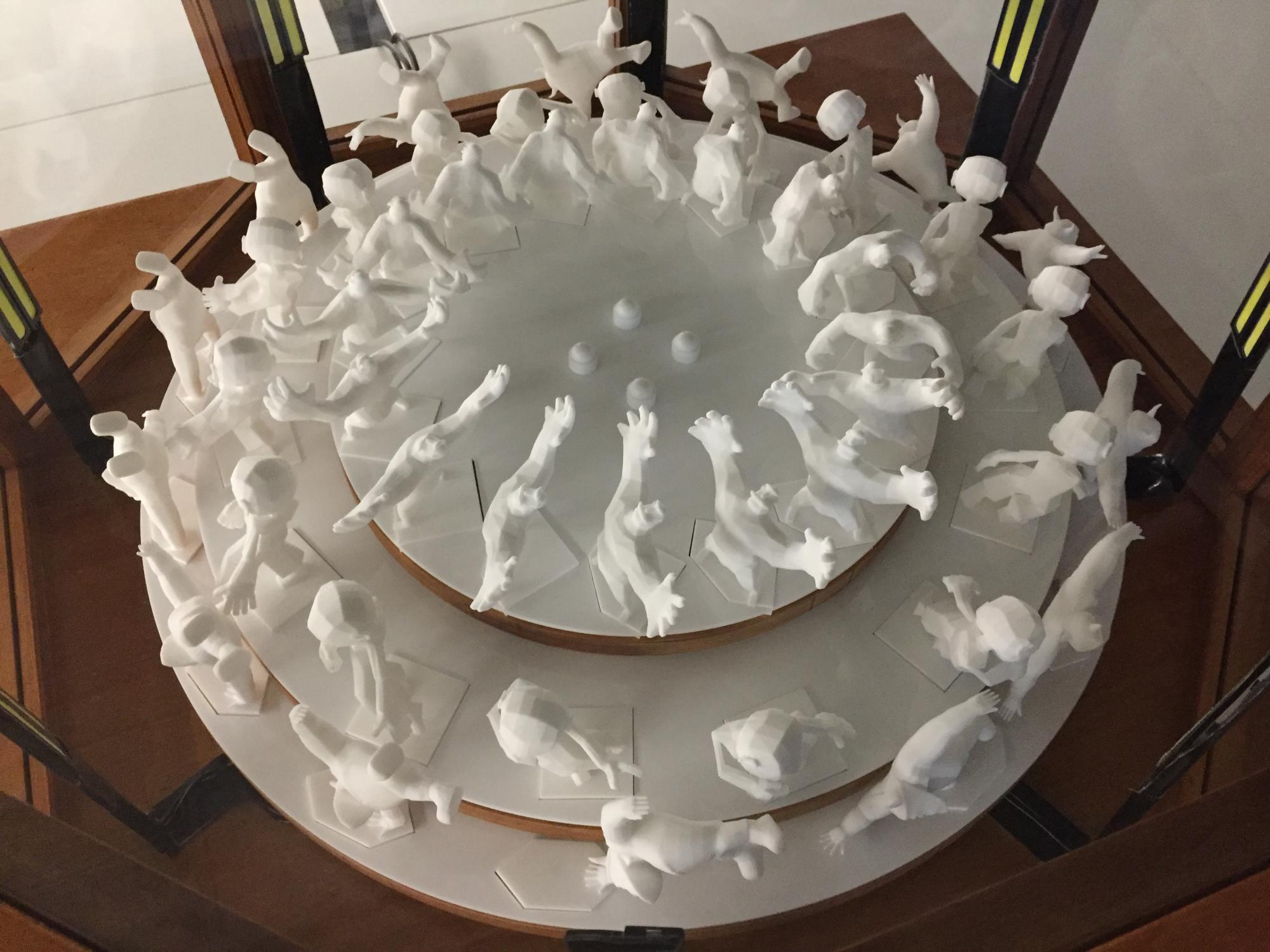

The zoetrope has been a long time coming and has finally arrived as a success! The intention of the project was to take animation out from behind the screen, which is what I can conclusively say we have done. The three characters on the turntable are illuminated by flashing L.E.D. lights which bring them to life when the table spins, each trapped in their own cycle of torment and hypnotically held in line with their peers experiencing the exact same fate but 1/16th of a second before and after.
Exhibition
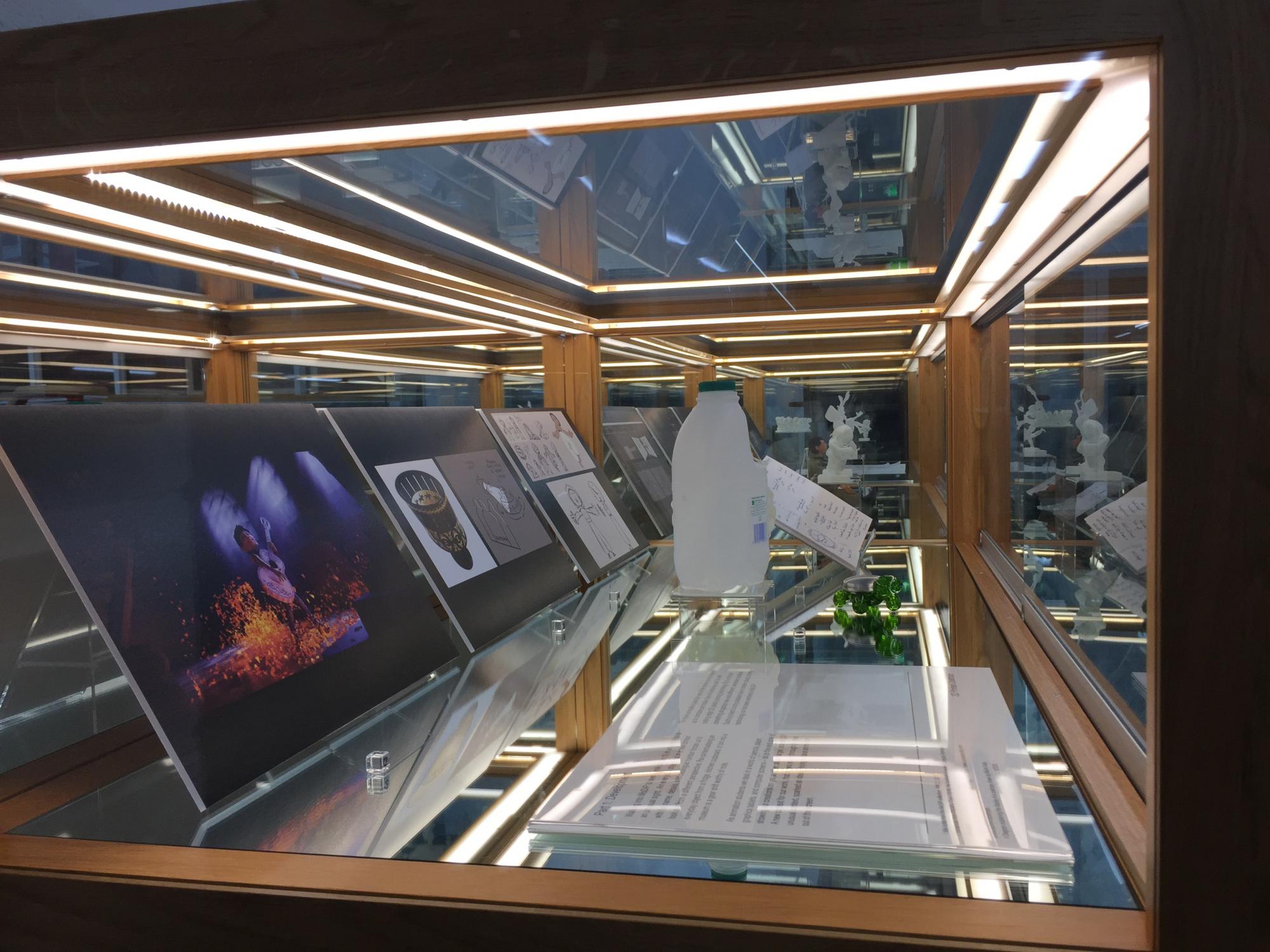
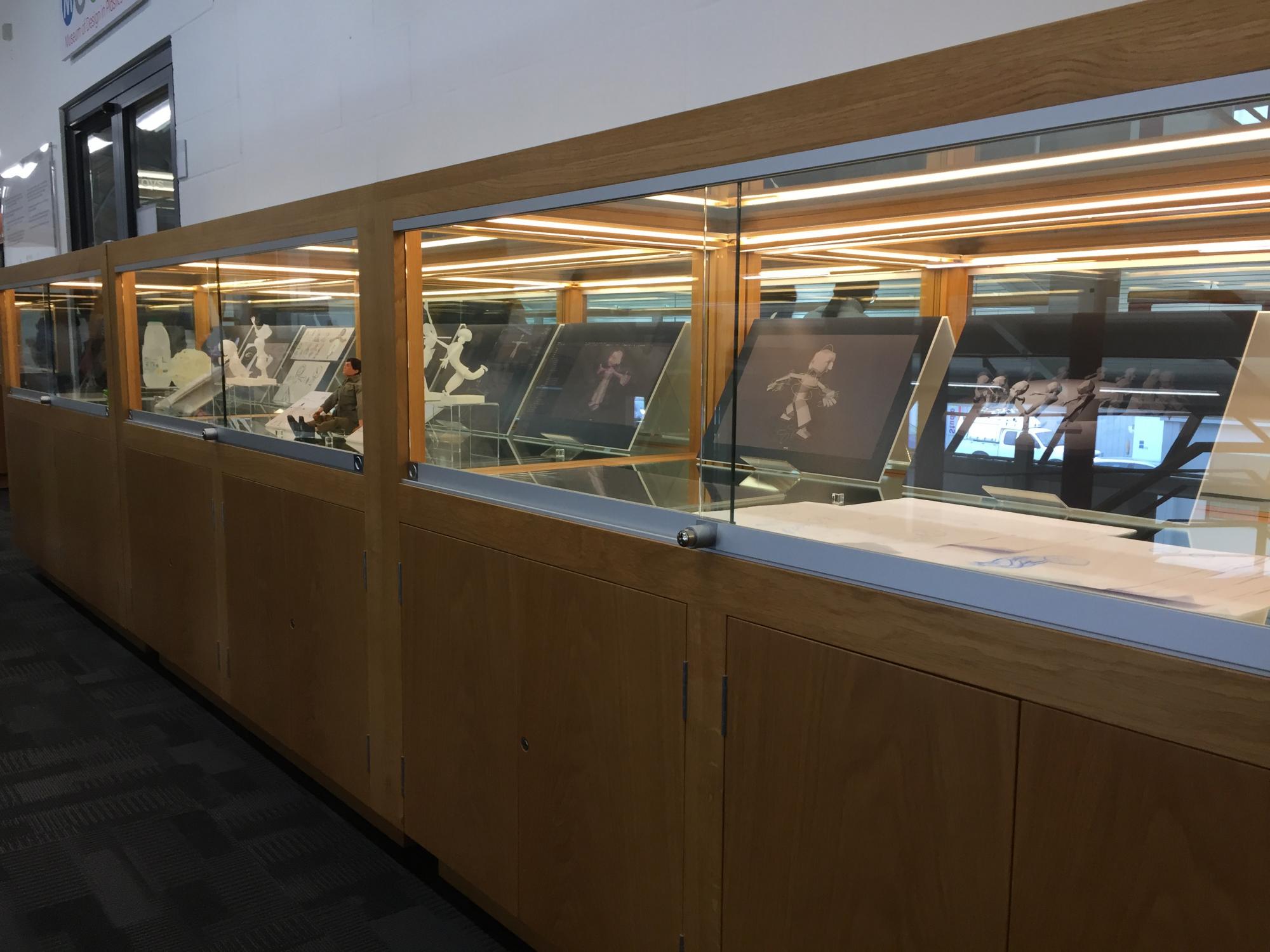
An exhibition is currently in three display cases outside MoDiP in the Arts University Bournemouth library from Tue 30 April to Fri 17 May. The display walks the viewer through the journey of the project from initial conception and inspiration from the MoDiP collection through to the final outcome using objects and images from each stage of the process.
The zoetrope itself could be seen in action on Friday 3rd May from 2pm, and on the mornings of Friday 10th and Friday 17th May 2019.
The journey of this project has been a pleasure to undergo and has taught me and my teammates a huge amount about animation in and out of the screen, as well as the possibilities and creative potential held within the MoDiP collection.
Written by Jonny Strutt

